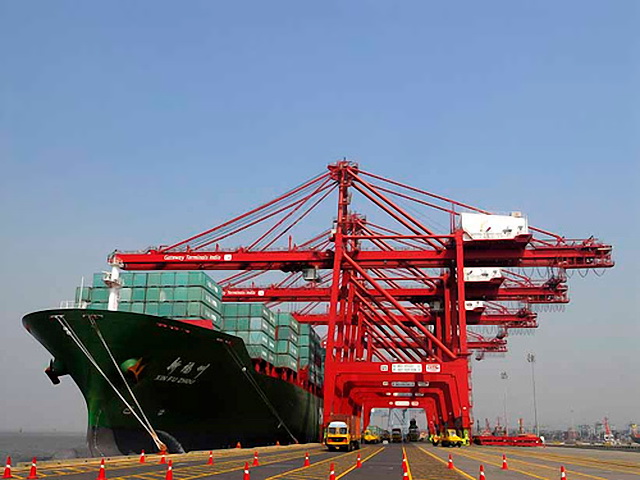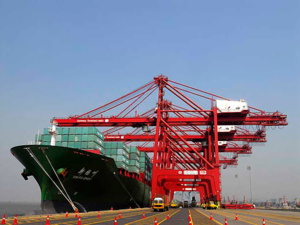Correlation between growth in the world economy and world trade volume is rapidly weakening. The most significant rebalancing awaits Asian countries, where share of exports in GDP is traditionally high (on average above 30%), say experts of the Washington-based Institute of International Finance (IIF, a global association of representatives of the financial industry ). South Korea, Malaysia and Thailand (40% of GDP) are dependent on deliveries abroad the most, China's exports equivalent to a quarter of GDP, in India it is 15%.
In recent years, trade in Asia has been increasingly concentrating around China as part of the production chain. Previously, this contributed to the growth in China's imports of raw materials and components, but now the supply is reduced. Share of Asian exports to China decreased by ten percentage points over five years, to a level of about 20% (despite the fact that share of imported components and raw materials in the composition of exports from the PRC is around 30%). Imports fall both because of localization of suppliers in China and due to increase in share of the services sector (in 2015, it had more than half of China's GDP - 50.5%). Only Indonesia managed to avoid shrinking exports last year - due to falling commodity price, correction there occurred a year earlier. However, the pace of supply growth abroad in all countries of the region were significantly below the level of 2011-2012. Vietnam still holds the relative advantage of cheap labor, as pointed by the IIF. China itself had to pay with 2% of GDP for rebalancing the economy and strengthening of renminbi - due to reduction in net exports.
Another trade subsidence factor is a slow recovery of the US economy, accompanied by the same concentration of growth in the services sector. Then again, share of trade with developed countries in Asia has been reducing the past decade and a half (from 70% to 47%). A widespread rejection of trade restrictions between the region’s countries themselves would stop stagnation of trade. This measure could increase the "horizontal integration", i.e. trade of competing products, the report's authors believe, noting, however, that similarity of the range of exports to Asia often reaches 60% or more. At the time, IIF considered useless competitive weakening currencies in terms of structural adjustment - just because of the structural changes in demand.
In recent years, trade in Asia has been increasingly concentrating around China as part of the production chain. Previously, this contributed to the growth in China's imports of raw materials and components, but now the supply is reduced. Share of Asian exports to China decreased by ten percentage points over five years, to a level of about 20% (despite the fact that share of imported components and raw materials in the composition of exports from the PRC is around 30%). Imports fall both because of localization of suppliers in China and due to increase in share of the services sector (in 2015, it had more than half of China's GDP - 50.5%). Only Indonesia managed to avoid shrinking exports last year - due to falling commodity price, correction there occurred a year earlier. However, the pace of supply growth abroad in all countries of the region were significantly below the level of 2011-2012. Vietnam still holds the relative advantage of cheap labor, as pointed by the IIF. China itself had to pay with 2% of GDP for rebalancing the economy and strengthening of renminbi - due to reduction in net exports.
Another trade subsidence factor is a slow recovery of the US economy, accompanied by the same concentration of growth in the services sector. Then again, share of trade with developed countries in Asia has been reducing the past decade and a half (from 70% to 47%). A widespread rejection of trade restrictions between the region’s countries themselves would stop stagnation of trade. This measure could increase the "horizontal integration", i.e. trade of competing products, the report's authors believe, noting, however, that similarity of the range of exports to Asia often reaches 60% or more. At the time, IIF considered useless competitive weakening currencies in terms of structural adjustment - just because of the structural changes in demand.






